A company’s brand is its primary means of building an image in the minds of consumers. This is why this image is constantly subject to change as tastes and trends morph to suit new eras. Brands should accordingly adjust and reinvent themselves. That’s where rebranding comes in.
Building an entirely new identity for your brand can be difficult as it runs up against prior conceptions. However, many companies have managed to reinvigorate their image and communication styles to drive success. This article will look at why and how brands change their image, along with a few use cases that we can learn from.
Why Rebrand a Company?
Considering how expansive building entirely new brand guidelines can be, why would a company rebrand? Additionally, how does a company even establish when it needs to shake things up?
When considering changing its brand, the company needs to ask 3 main questions:
- Are you reaching your target audience?
- Has your market changed?
- To what extent is your lack of success an image and communication issue?
Simply put, revamping your brand can help realign it with the tastes of your customers. This can be as simple as a mild change to a logo to get people talking and make a few headlines with a modern look. It can also be something as drastic as a top-down makeover calling for a severe change in communication style, outreach policy, brand attitude, and much much more.
How Much can Rebranding Cost?
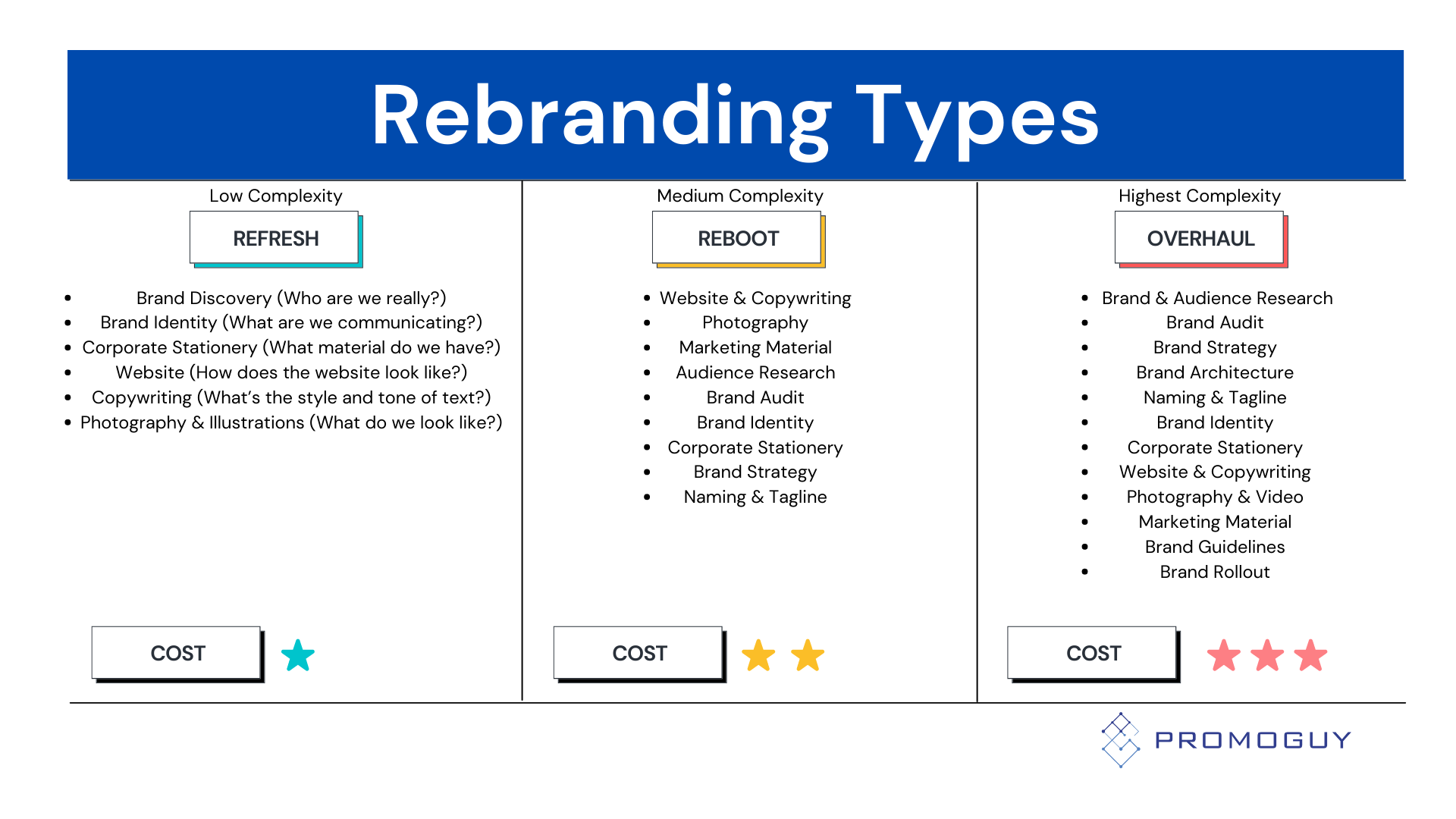
The average cost to rebrand a company depends on the scale of the operation. On a smaller scale, a refresh can cost anywhere from $30,000 to $50,000 for a period of between 1 financial quarter to almost half a year. A brand reboot can net a company $60,000 to $80,000 half a year or somewhat more. Lastly, an overhaul is the most expensive, costing about $100,000 to $250,000 over 8 months to a year.
These estimates may be rough but they are true to the scale of changes necessary. As a sometimes costly endeavour, changing elements of the brand can require different levels of alteration depending on how misaligned the brand identity is with consumer expectations. It’s important to note that there are no hard and fast rules and the lines between these categories can often blur.
It’s best to update with the times. When wondering how often should a company rebrand, the correct answer is as much as it needs to. However, most companies that have established an original tone and perception will shake things up every 5 to 10 years. It becomes a rite of passage from one era of the company to the next.
Steps of the Rebranding Process
For a full-scale overhaul, the rebranding process can have a lot of steps:
- Identify the core issue: You need to be sure a rebranding will solve the problem you’re tackling/
- Decide on rebranding personnel: Depending on the scale of the new branding and your company, you need to decide whether to work with your in-house team or an external rebranding agency.
- Market and Competitor Analysis: Know your environment and competitors to get a sense of the latest trends, industry standards, and consumer tastes.
- Audience analysis: A more specific version of the market analysis involves identifying who is and isn’t in your market along with how you can suit your messaging to their preferences.
- Brand audit: Identity what does and doesn’t work, see how cohesive all your iconography and messaging are, see if your values need to be updated, and identify your new mission and vision.
- Build a brand communication strategy: Bring everything together in your communication (more on this in the section below).
- Craft an image and guidelines: Decide how you make your communication iconic with your imagery, language, and style.
- Launch your brand and collect feedback: Once you’re out there, it’s important to make sure you are being received as intended. Listen to the audience, conduct tests, and adjust where necessary. Some companies are big enough that a rebranding announcement itself becomes a major story worth raising buzz over.
Building a Brand Communication Strategy

Once you’ve determined that the problem resides in your branding, done some preliminary consumer research, and decided on the basics of your brand, it’s time to create a brand communication strategy. The first step in doing this is to test which elements of the branding are causing the issue and decide the scale of rebranding. The procedures for a refresh vs an overhaul can be very different, so it’s best to know beforehand.
The next step is to go back to basics. Remember: all branding must result from the core values and brand identity (unless the company is going for a complete overhaul, in which case even these usually stable aspects are subject to change). Compare the elements you want to change to the core elements of the brand.
Next, you need to develop advertising with a cohesive brand communication style. If your brand is about efficiency and futurism, you may want to research what designs look cutting-edge. Conversely, if your brand relies on wholesome, timeless attitudes, you might want to see what makes people feel nostalgic or gives them a feeling of trust. Rearrange your copywriting, website, visual design, and strategy to build on these emotions.
This is a complex process so we highly recommend reading our article about developing a brand story and applying it in terms of marketing.
Building Brand Messaging
Communications strategies are a long-term affair but messaging is the quick-fire operational side. In terms of messaging, there are no rules that will get you a precise result. There are, however, methods that make it easier to decide on a message and keep the voice consistent. All your messaging should take into account these minimal elements:
- Brand essence (voice, tone, personality): Are you formal or informal? Friendly or professional? Cutting-edge or classical? This should be rooted in what emotion you want customers to feel.
- Tagline: A phrase that instantly brings your company to mind (McDonald’s has “I’m lovin’ it”, Nike has “Just Do it”).
- Value prop: What do you offer that no one else can, both cognitively and emotionally? E.g, “we build cars that embody the feeling of power and class”.
- Brand messaging pillars: How do you bring your value proposition to life? Following the car example above, “latest technologies, legacy designers, and exclusive client selection to make our cars rare”.
- Proof Points: Be more than just talk. Show your customers that you can physically deliver on the promises your messaging carries. Give some stats and customer reviews to spice up the sales pitch.
From these elements, companies can derive a consistent message for all their marketers to follow.
Tips for Rebranding
Since branding can be more of an art than a science (which makes it difficult to pin down) here are some miscellaneous tips that can help you.
When talking about aesthetics, consistency and flexibility are key. You need a logo that is easy to implement everywhere, recognizable, and can take on a variety of shapes. The best logos have a simplicity that makes them very universal (Apple, Windows, Playstation, etc.). They should come with an instantly apparent colour scheme, like Google’s.
Field test for emotional associations with customers using synonyms. Find out what feelings you want your brand to elicit and try to capture those. When people think of Mercedes, they think about class. When they think about Coca Cola they conjure images of a brand with a prestigious legacy. A coherent messaging strategy will invoke these associations, which demonstrates a successful effort at branding.
After you settle on a few finalists, do some field testing for your messages and advertising. A/B tests can be crucial in this, helping to refine the message over the course of multiple examinations. You can also try focus groups for logos to see how they test with your demographic.
Branding Success Stories
Here are some cases that illustrate the importance of branding and alternative branding strategies.
Eat Fresh Refresh, Customer Service Revamp, & Subway’s Rebranding

If there was ever a brand that needed rebranding, Subway was it. There was nothing wrong with the product, but numerous communications scandals and the highly disturbing case of their spokesperson’s legal troubles put a hitch in the company’s PR.
The company chose to refresh their brand communication and advertising with a new logo, look, and online strategy. Aside from getting high-profile athletes to feature in advertising (playing on the health promise in their brand values), they doubled down on customer service with online integration. Improved digital ordering process on the Subway App, Subway.com, and third-party delivery partners allowed them to capitalise on another core value: customization in their food service.
The better, user-friendly method, along with the “Eat Fresh Refresh” tagline, logo alteration, and the addition of a “fan-favourite” subs option at their franchises gave the company some much-needed momentum. It has served as a major fast food rebranding success story ever since.
Siemens Becomes Unify

Technology and consumer electronics provider Siemens had been stuck in the past for quite some time. Their most well-known products in the 2000s had been their cellphones but coming into the recent decades, those had ceased to be a major draw in the minds of consumers. This signalled that they needed to change with the times.
Technology companies need to embody a futuristic aesthetic, so updating Siemens look, feel, and logo was a must. This was especially necessary due to their shift away from their old image and into a legacy brand that emphasises its impact on society. The first way they did this was with the tagline ‘Ingenuity for life’ and highlighting their marketing for 3 core areas: the Future of Manufacturing, Sustainable Energy, and Intelligent Infrastructure.
The innovation centric, worldwide rebrand revamps the brand communication and highlights the operational and strategic shift towards automation and digitalisation. The new brand look and language emphasise this as well, focusing on people and highlighting social benefit:
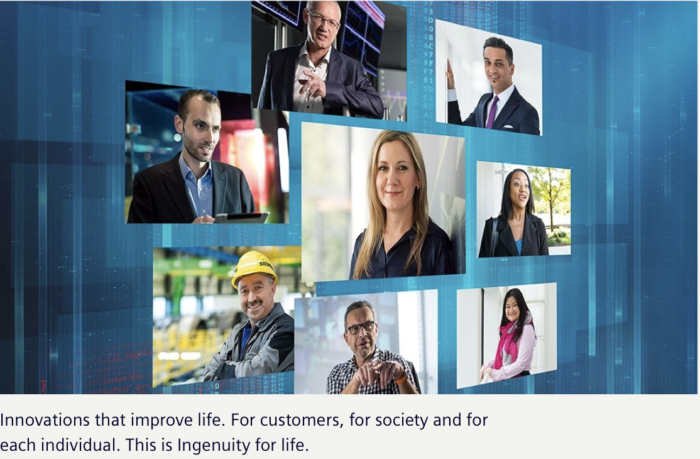
The use of an emotional signifier and legacy has been a key to Siemens gaining prominence as a conglomerate. The refocus has since been successful and reinvigorated interest in the brand, unifying its very diverse product portfolio.
MailChimp Goes From Email Service to Full-Fledged Marketing Platform
A B2B brand strategy requires a dose of flavour, even if it isn’t as (allegedly) emotionally driven as B2C. Mailchimp’s rebrand is proof that you can listen to customers and help expand your business with their feedback. Along with their move towards being a full-fledged platform for all of a businesses marketing needs, they changed up their brand communication to emphasise the complete marketing experience they now offered.
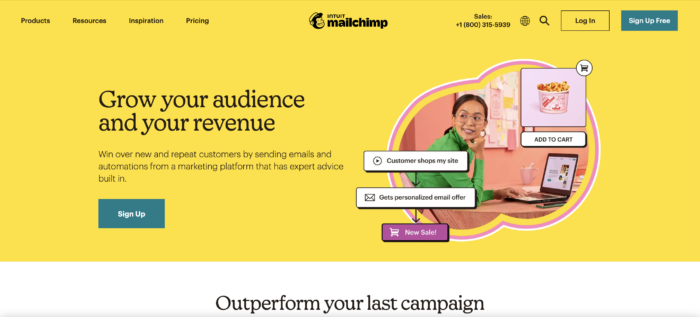
Rather than emphasising “easy email marketing” on their platform, they talk about outcomes. The new page focuses on growing audiences and revenues. This switch to a more definitive statement of positive business growth possibilities emphasises the benefits rather than describing the services.
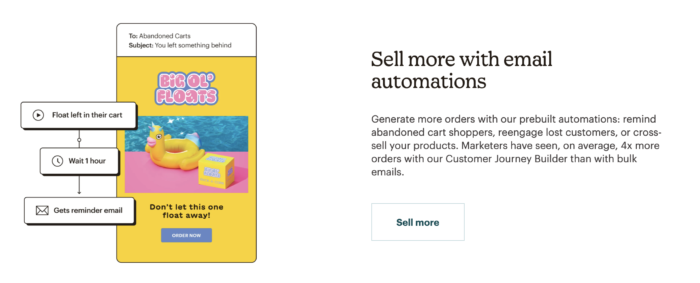
While the previous site focused on the functions of the platform, the new page goes straight into the USPs and value statement. Instead of talking about their offerings or deals, it jumps straight to the growth it can create, peppering the page with big-name customers and proof points to seal the deal.
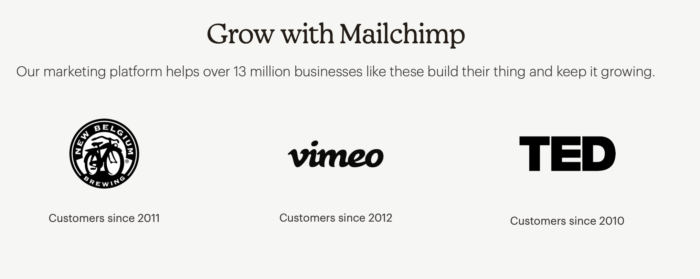
This is an example of a company embracing its own growth and being confident that it doesn’t have to explain itself to its customers. This comes alongside the bright colour scheme and confident yet informal language they implemented.
Looking to rebrand your business? We provide brand strategy consulting and brand strategy services for clients all over the world. Have a look at our services page to learn more.


